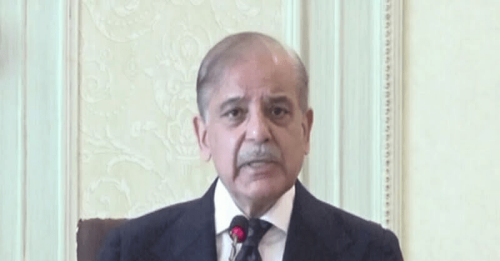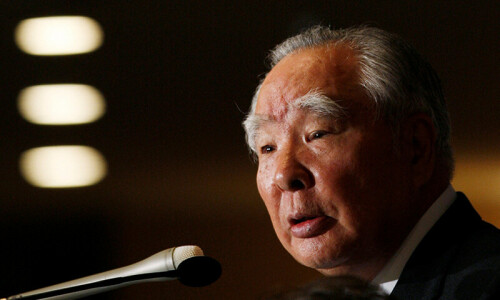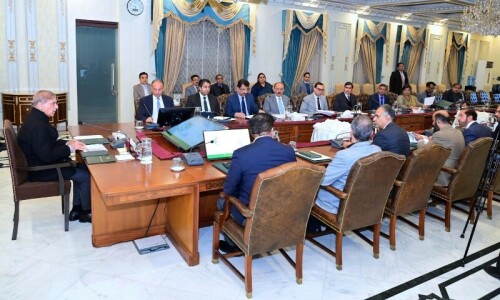HOW do you compare the economic track record and performance of one government with another? For example, if we want to determine whether or not the present government’s economic track record is better than that of a preceding regime, how does one best make that comparison?
One simple way is to choose an economic indicator of some sort, let’s say the growth rate, and argue that whoever had the highest growth rate wins. I’ve seen people use indicators like the stock market, growth rates, revenue collection, fiscal deficit or foreign exchange reserves amongst many others to try and draw such a comparison.
But anybody who deals with these numbers on a regular basis will tell you that such a comparison is not possible to make. An economy like Pakistan’s which is heavily dependent on external inflows to support its growth, will under-perform whenever such inflows slow to a trickle. It’ll boom when they rise again on the back of some geo-strategic game the country finds itself caught in the middle of.
Secondly, homegrown growth rates can be a few years in the making. In a country like Pakistan, where governments have usually not lasted for more than a few years, it’s hard to say that any growth rate has been the result of that government’s policies.
So the Musharraf regime, which lasted for almost a decade, presided over a miserable growth record in its first few years in power, from 1999 to 2002. This was in spite of making some reasonably strenuous adjustments on the fiscal side, and putting in place some policies which tried, initially at least, to plug some of the weaknesses of the past decade. But growth picked up only when the external money started to flow, from 2002 onwards. The external bonanza took many forms, direct assistance, lenient treatment from the IMF, debt rescheduling on very favourable terms, and enhanced market access. Of course, this bonanza lasted only as long as the Americans’ felt their requirements in the war on terror were largely being met.
As soon as the bonanza dried up, the growth rates plummeted. So can we say clearly that the growth performance of the Musharraf years was the result of any homegrown policies and better management of the economy? Not at all. It was nothing more than a short-term bubble that lasted only as long as the inflows did, creating a party-like atmosphere amongst the elites who were the main beneficiaries of the largesse.
So is it fair to compare the Musharraf-era boom years with those of the democratic government that came before? Of course not, unless the comparison runs only till 2002, before the bonanza came, and in that case the military regime’s performance does not stand out from that of its predecessors.
The other problem with comparing growth rates is that when they are homegrown, they have been years in the making. No policy produces results instantly. And in a country like Pakistan, where governments have usually not lasted for more than a couple of years, it’s hard to tell who sowed and who harvested.
The second Nawaz Sharif government, for instance, harvested the fruits of the private power policy in the form of abundant electricity during their tenure. But the second Benazir government, for that matter, harvested the private power policy which had in fact been developed since at least 1988.
Likewise with foreign exchange reserves. They’ve come and gone through our treasury like the wind, and that’s no idle metaphor! The reserves fell to critical levels in 1996, but were rescued quickly by an IMF arrangement that the Nawaz Sharif government managed to negotiate in spite of being famously distracted by the urge to settle scores.
But no sooner had the rescue arrived that the curtain of sanctions fell. From May 1998 onwards, the government had no economic policy other than day-to-day crisis management.
The Nawaz Sharif government did not invite the sanctions upon itself, nor did it create the strong vulnerabilities that made it so difficult for the economy to bear the brunt of the sanctions. It had no choice but to deal with the effects of this calamitous situation, and midway through its tenure, in the depths of this crisis, came the Kargil conflict, and further tightening of the noose.
Growth could only suffer through all this. No amount of economic wizardry would have created a different situation. Pakistan’s economy is critically dependent on foreign inflows, and it had a very difficult time getting through the sanctions. Musharraf discovered that, because in spite of putting in place a set of policies that sought to attract investment, in spite of bringing some rectification of the fiscal equation, growth remained elusive and investors refused to be seduced.
Growth only picked up when the generosity of our friends arrived on our shores one more time. The nature and quality of the growth that followed is another column to write another day, but it is interesting to note that such bonanzas have materialised only during military governments, helping prop them up, and strengthening the false narrative that these regimes like to peddle, that they managed things better than the civilians did.
Fact of the matter is, all governments are by and large the same when it comes to their economic performance. They all look for foreign benefactors, and if they find them, they smile and distribute the fruits of the foreigners’ generosity with the wiles of a soldier. But if they don’t find the foreigners generosity, they sit around and sulk until it becomes necessary to go banging on the doors of the IMF.
They’re all largely alike in the economic realm, which is why the critical vulnerabilities of our economy have found no remedy. It is also why this government will sit and sulk as the crisis approaches, and then go banging on the doors of the IMF all over again, because that is what the script says.
The writer is a Karachi-based journalist covering business and economic policy.
khurram.husain@gmail.com Twitter: @khurramhusain











































